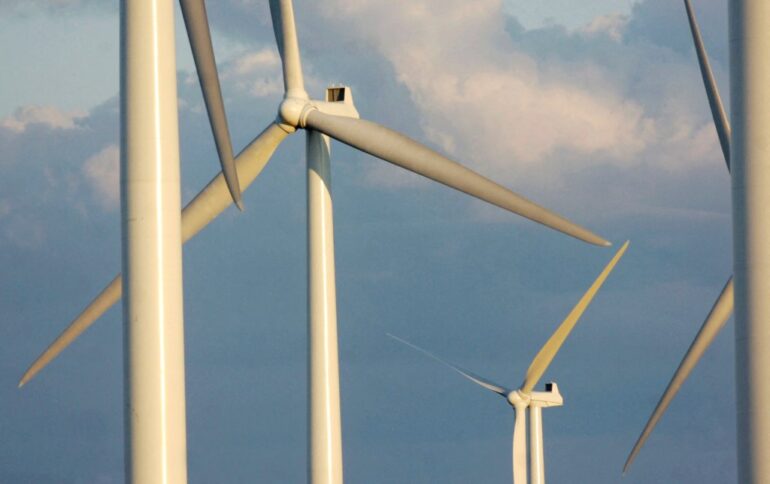🔴 Website 👉 https://u-s-news.com/
Telegram 👉 https://t.me/usnewscom_channel
As we approach Earth Day this Tuesday, it’s tempting to believe that the world is on the brink of environmental collapse. We are constantly inundated by dire predictions of climate catastrophe and warnings about the planet’s imminent destruction.
But this is misleading. Rather than spiraling into panic, we should take a moment to appreciate the remarkable progress we’ve made in improving the environment, and acknowledge that a key factor is prosperity.
When Earth Day was first marked 55 years ago, the world faced some grim environmental challenges.
Rivers were catching fire and cities were choked with smog. Air and water pollution were rampant, especially in the industrialized West. Today, outdoor air pollution has declined dramatically in rich countries. Over the past three decades, death risk from air pollution has spectacularly declined by over 70%, while waterways have become cleaner and nations reforested.
Chinese example
Yet, in poorer countries, the picture is more complicated. That’s because as nations come out of poverty, industrialization at first increases pollution, before nations become rich enough to tackle it. But even in the developing world, progress is being made. Look at China: Once notorious for its severe pollution, it is now actively cleaning up its air and water.
For the 7 billion people who don’t live in the rich world, outdoor air pollution became worse between 1990 and about 2015. But as especially sulfur emissions have peaked and started declining, deaths from outdoor air pollution in poor countries have actually slightly declined.
Moreover, when focusing on pictures of smoggy Asian megacities, we miss the much deadlier air pollution that takes place indoors for the world’s poorest people. This overlooked problem stems from energy poverty, where people are forced to rely on traditional biomass — wood, cardboard and dung — to cook and keep warm. The World Health Organization estimates that 2.1 billion people live in homes that are many-times more polluted than even the worst outside days in Delhi or Beijing, equivalent to each person smoking two packs of cigarettes daily. Even today, indoor air pollution kills more than 3 million people each year.
Look inside
Yet a spectacular Earth Day fact that almost no one celebrates is that indoor air pollution for the non-rich world has more than halved since 1990. That means more than 4 million lives are saved each year.
How did this progress happen? Through prosperity, meaning fewer poor people rely on dung and cardboard to cook and keep warm; instead they use much cleaner and better energy sources like natural gas and electricity.
Indeed, in many ways the greatest polluter is poverty. When people are struggling to survive, environmental concerns take a backseat. But as countries get richer, they can invest in cleaner technologies, regulate industries, and focus on improving public health. Prosperity doesn’t just lead to better living standards and nutrition and people becoming more resilient to environmental challenges, it also actively makes societies improve their environment.
There is a clear connection between a nation’s income and its environmental performance. The richer a country becomes, the better it handles its environment, as shown by Yale University’s Environmental Performance Index. A society that is focused on economic development can not only lift people out of poverty, but will also address pollution and invest in sustainable practices.
Unfortunately, Earth Day and its broader environmental movement often ignore practical solutions, instead favoring sensationalism. Many of the environmental predictions that gained widespread attention in the 1970s turned out to be alarmist and wrong. We were told that we would run out of most resources, that overpopulation would lead to global catastrophe, and that we would need to wear gas masks outside by the year 1985. None of these predictions materialized, but they nonetheless fueled a culture of fear and misallocation of resources.

Climate deaths down
We’re seeing this pattern repeat today, particularly when it comes to climate change. Yes, climate change is a real challenge, but we must keep it in perspective. It is not the existential threat that some would have us believe. In fact, over the past century deaths from climate-related disasters — such as storms, floods, droughts and wildfires — have declined by a remarkable 98%. This is not because the environment has remained static, but because human innovation and adaptation have made us more resilient.
The reality is we are not on the precipice of doom. Instead of being scared by sensationalist rhetoric into spending trillions of dollars on poor climate policies, we should focus on practical, smart solutions that can make a real difference. In the case of climate change, this means investing in green energy innovation. When it comes to one of the world’s biggest environmental challenges, we should end indoor air pollution and save 3 million lives each year, mostly through prosperity and access to clean, cheap and reliable energy.
As we mark Earth Day, we shouldn’t panic, but instead celebrate the immense environmental progress we’ve made and will make, as long as prosperity continues.
Bjorn Lomborg is president of the Copenhagen Consensus, a visiting fellow at Stanford University’s Hoover Institution, and author of “False Alarm” and “Best Things First.”

